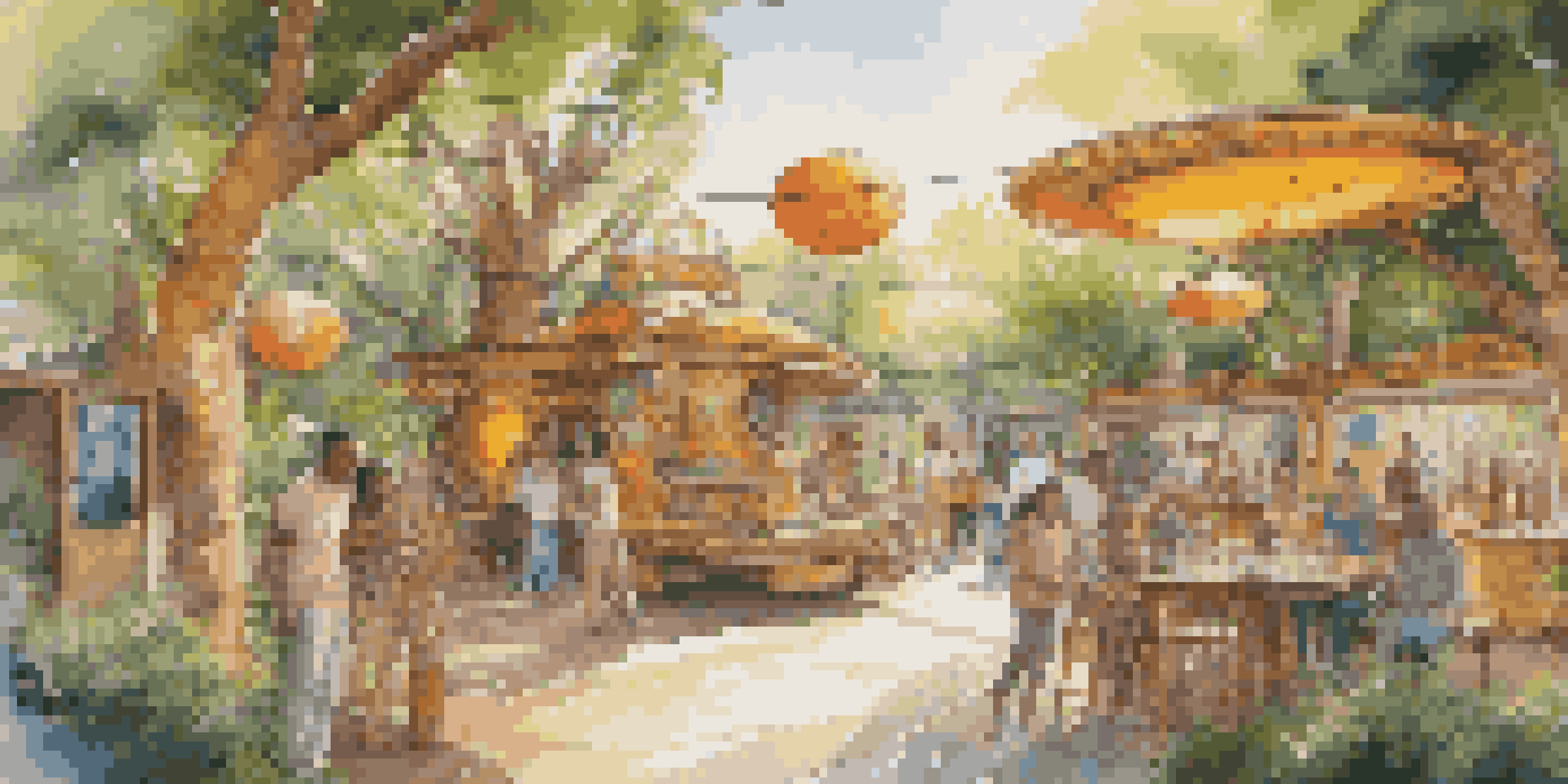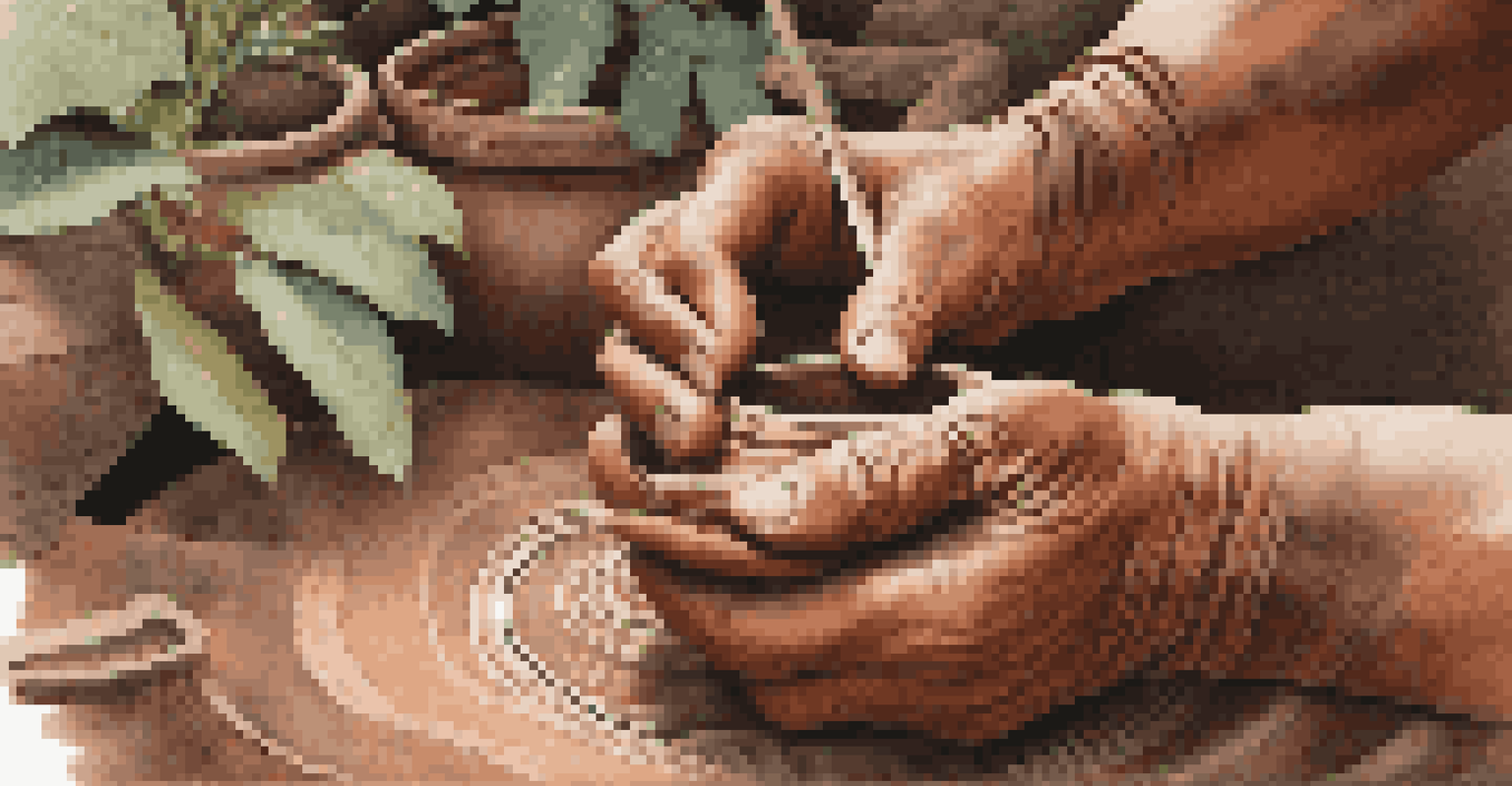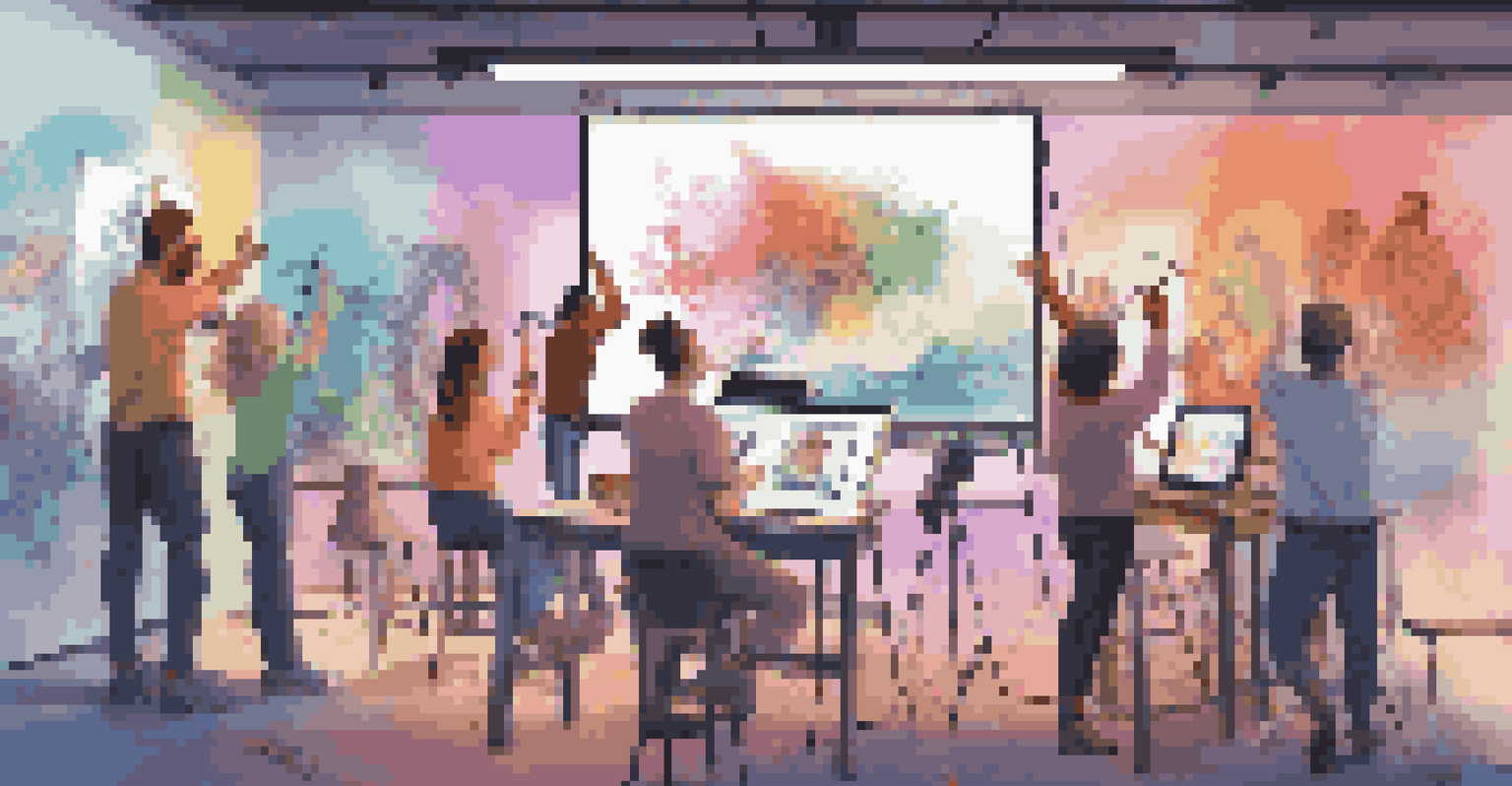Decolonizing Art Criticism: New Paradigms and Approaches

Understanding Decolonization in Art Criticism
Decolonization in art criticism involves rethinking traditional frameworks that often privilege Western perspectives. This shift invites a broader understanding of art that includes diverse cultural narratives and histories. By questioning who gets to define art and its value, we open the door for marginalized voices to be heard and appreciated.
Art is a universal language, and when we decolonize it, we allow for multiple dialects to be spoken.
For example, think about how art from Indigenous communities has often been dismissed or misinterpreted through a colonial lens. Decolonizing art criticism allows us to appreciate these works in their own cultural contexts, fostering a deeper connection between the artwork and its origins. This perspective shift not only enriches our understanding but also promotes inclusivity.
Ultimately, embracing a decolonized approach means redefining art's significance and acknowledging the cultural richness that various perspectives bring. It’s about dismantling power structures within the art world and making space for a more equitable discourse.
The Role of Identity in Art Criticism
Identity plays a crucial role in shaping perceptions of art and its criticism. Artists' backgrounds—whether cultural, racial, or personal—inform their work and the narratives they present. Recognizing this helps critics engage with art on a more profound level, understanding not just the visual elements but also the underlying messages.

Consider the impact of a critic who shares similar cultural experiences with the artist. Their insights can reveal nuances that might be overlooked by someone outside that context, enriching the dialogue around the artwork. This emphasizes the importance of diverse voices in the realm of criticism, as they contribute unique perspectives that enhance our collective understanding.
Embrace Diverse Cultural Narratives
Decolonization in art criticism encourages the appreciation of diverse cultural narratives that challenge traditional Western perspectives.
By prioritizing identity in art criticism, we create a more holistic view that honors the artist’s intentions and experiences. This inclusivity fosters a richer conversation about art, allowing for multiple interpretations and deeper connections.
Challenging Canonical Norms in Art
Art criticism has long been dominated by established canons, often sidelining non-Western art forms. Challenging these norms is essential to decolonizing the art world and recognizing the value of diverse artistic expressions. This means questioning why certain artists or styles are celebrated while others are overlooked.
The stories we tell about art reflect our values and biases; if we want to see the world as it truly is, we must include diverse perspectives.
For instance, the global art scene is filled with innovative practices from artists in Africa, Asia, and Latin America that deserve recognition. By critically examining the criteria used to evaluate art, we can expand the canon to include a broader range of voices and styles. This not only enriches our understanding of art but also reflects the multicultural world we live in.
Embracing new paradigms requires a willingness to engage with artwork that might be outside our established preferences. By doing so, we can foster a more inclusive art criticism that celebrates creativity in all its forms.
Engaging with Community and Collaboration
Decolonizing art criticism involves actively engaging with the communities from which the art originates. This means establishing collaborative relationships with artists, curators, and local audiences. Such partnerships can lead to a more authentic understanding of the artwork and its cultural significance.
A powerful example is community-led art projects that encourage participation and feedback from local residents. These initiatives create a dialogue that not only informs the critique but also empowers the community to reclaim their narratives. When critics work alongside communities, they can better appreciate the complexities and layers of meaning within the art.
Engage Communities for Authentic Insights
Collaborating with local communities enhances the understanding of art and empowers them to reclaim their narratives.
By fostering community engagement, art criticism becomes a shared experience rather than a solitary evaluation. This approach honors the voices of those directly connected to the art, making the critique more reflective of diverse experiences.
Incorporating Indigenous Knowledge Systems
Indigenous knowledge systems offer vital perspectives that can enrich art criticism. These systems often emphasize storytelling, connection to land, and community values, which can transform how we interpret and critique art. By integrating these perspectives, critics can gain a deeper appreciation for the cultural context surrounding the artwork.
For instance, many Indigenous artists create works that reflect their relationship with the land, traditions, and community. Understanding these elements allows critics to approach the art with a more nuanced perspective, recognizing its significance beyond aesthetics. This shift can lead to richer interpretations that honor the artist's heritage and intentions.
Incorporating Indigenous knowledge systems is not just about better understanding art; it's about acknowledging the wisdom and teachings these cultures offer. This integration creates a more holistic framework for art criticism, which is essential in a decolonized approach.
Embracing Digital Platforms for Broader Reach
In today's digital age, art criticism is evolving through online platforms that reach a global audience. This shift allows for a more diverse range of voices to be heard, breaking down geographical barriers that once limited access to art criticism. By embracing digital spaces, critics can share insights and engage with audiences worldwide.
For example, social media platforms enable artists to showcase their work directly to their followers, bypassing traditional gatekeepers. Critics can engage with these artists online, fostering real-time discussions and feedback. This dynamic interaction enriches the critique process and allows for a more immediate connection with diverse audiences.
Utilize Digital Platforms for Inclusion
Digital platforms democratize art criticism, allowing underrepresented voices to contribute and engage with a global audience.
The digital landscape presents an opportunity to democratize art criticism, inviting voices from various backgrounds to contribute. By leveraging these platforms, we can amplify underrepresented perspectives and create a more inclusive art discourse.
The Future of Art Criticism: A Collaborative Vision
The future of art criticism lies in collaboration and inclusivity, embracing diverse perspectives to enrich the dialogue around art. By working together—critics, artists, and communities—we can create a more equitable framework that honors all voices. This vision encourages a more dynamic and responsive approach to art appreciation.
As we move forward, it's essential to continuously reflect on our practices and challenge existing biases within art criticism. By actively seeking out new voices and perspectives, we can cultivate a richer understanding of art that transcends traditional boundaries. This ongoing evolution will help ensure that art criticism remains relevant in an ever-changing world.

Ultimately, a collaborative vision for art criticism not only enhances our understanding of art but also fosters a sense of belonging among diverse communities. This inclusivity will pave the way for future generations of artists and critics, creating a more vibrant and interconnected art world.
Conclusion: The Path Towards Decolonized Art Criticism
Decolonizing art criticism is an ongoing journey that requires commitment, openness, and collaboration. By challenging established norms and embracing diverse perspectives, we can create a more inclusive framework that honors all artists and their stories. This approach not only enriches our understanding of art but also fosters a sense of belonging within the art community.
As we navigate this path, it's essential to remain mindful of the power dynamics at play and strive for equity in our practices. Engaging with communities, incorporating Indigenous knowledge, and utilizing digital platforms are vital steps in this process. Each effort contributes to a richer art discourse that reflects the diverse world we live in.
In conclusion, the future of art criticism depends on our ability to listen, learn, and adapt. By embracing a decolonized approach, we can pave the way for a more vibrant, inclusive, and equitable art world that celebrates creativity in all its forms.